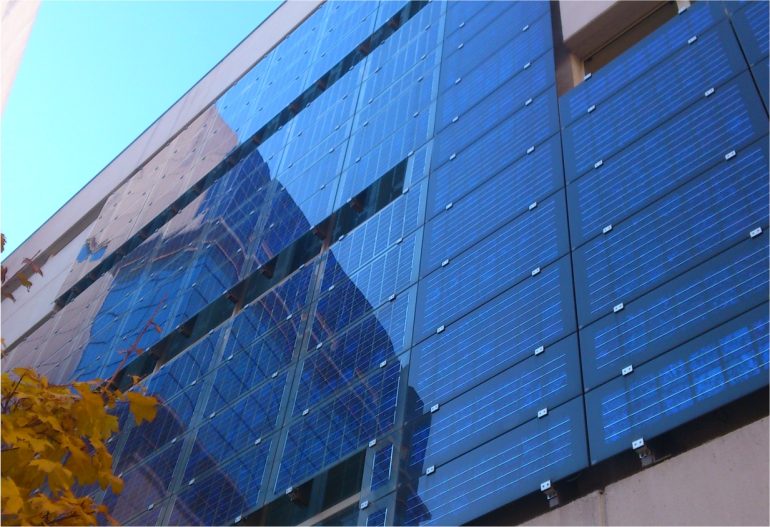The advantages of solar windows power as a source of clean, renewable energy seem obvious. Sunlight is abundant, free and, for all practical purposes, eternal. While the price of solar photovoltaic cells recently has plummeted and their efficiency has gone up, challenges remain around siting vast arrays of solar-electric panels and finding ways to integrate them into buildings and other applications.
Photovoltaic (PV) glass uses the same basic principle as solar panels that you see on roofs, but it is transparent. The technology used is known as thin-film, which simply means that the active PV layer is applied very thinly. Unlike conventional solar panels where silicon monocrystals are grown and sliced into wafers, thin-film technology vacuum-deposits a film onto a conducted glass layer.
Think about it:
If windows can generate electricity for use on site, the consumer would gain the advantages of free, non-polluting power and at least partial grid independence. The grid would reduce its reliance on fossil fuels, gain resilience and get relief from peak-use demands, which would slash greenhouse gas emissions. Solar windows would also be practically unnoticeable, meaning you could reap the benefits of solar power at home with a minimum of impact on you or the community around you.
Turning windows into solar collectors is the kind of disruptive technology that can revolutionize energy generation and consumption and contribute to a low-carbon energy future. Someday, buildings ranging from your own house to urban skyscrapers might generate much of their own electricity through innocuous luminescent solar concentrating windows.






 Great Jubilee Centre
Great Jubilee Centre Sempagala Zone
Sempagala Zone Old Bagamoyo Rd
Old Bagamoyo Rd
